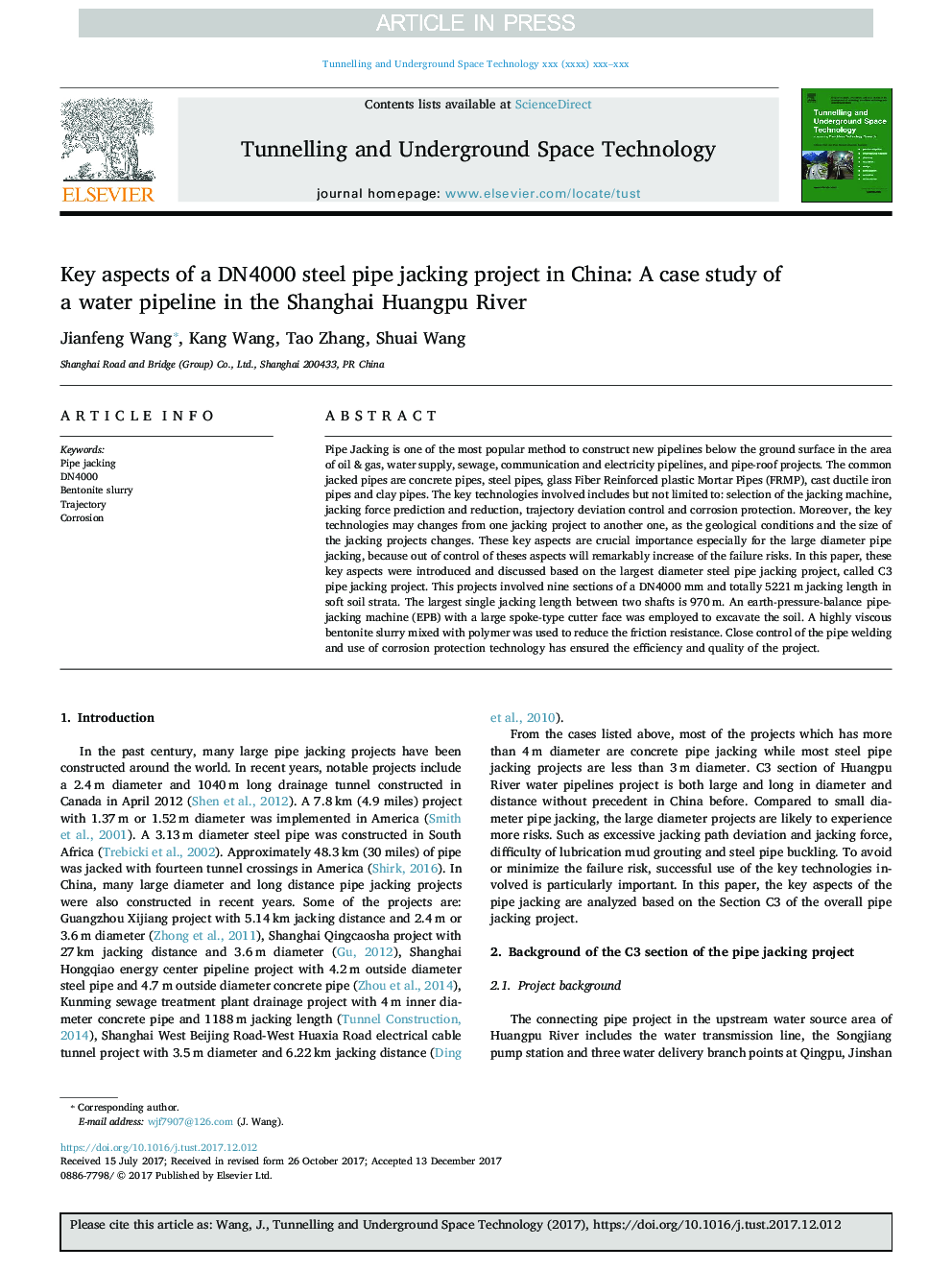| Article ID | Journal | Published Year | Pages | File Type |
|---|---|---|---|---|
| 6782929 | Tunnelling and Underground Space Technology | 2018 | 10 Pages |
Abstract
Pipe Jacking is one of the most popular method to construct new pipelines below the ground surface in the area of oil & gas, water supply, sewage, communication and electricity pipelines, and pipe-roof projects. The common jacked pipes are concrete pipes, steel pipes, glass Fiber Reinforced plastic Mortar Pipes (FRMP), cast ductile iron pipes and clay pipes. The key technologies involved includes but not limited to: selection of the jacking machine, jacking force prediction and reduction, trajectory deviation control and corrosion protection. Moreover, the key technologies may changes from one jacking project to another one, as the geological conditions and the size of the jacking projects changes. These key aspects are crucial importance especially for the large diameter pipe jacking, because out of control of theses aspects will remarkably increase of the failure risks. In this paper, these key aspects were introduced and discussed based on the largest diameter steel pipe jacking project, called C3 pipe jacking project. This projects involved nine sections of a DN4000 mm and totally 5221â¯m jacking length in soft soil strata. The largest single jacking length between two shafts is 970â¯m. An earth-pressure-balance pipe-jacking machine (EPB) with a large spoke-type cutter face was employed to excavate the soil. A highly viscous bentonite slurry mixed with polymer was used to reduce the friction resistance. Close control of the pipe welding and use of corrosion protection technology has ensured the efficiency and quality of the project.
Keywords
Related Topics
Physical Sciences and Engineering
Earth and Planetary Sciences
Geotechnical Engineering and Engineering Geology
Authors
Jianfeng Wang, Kang Wang, Tao Zhang, Shuai Wang,
